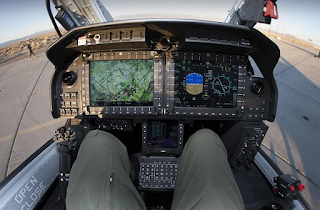AH-1Z Viper Attack Helicopter / US Maines. The United States Marine Corps (USMC) replaced the two-bladed AH-1W Super Cobra with the AH-1Z Vi...
 |
| AH-1Z Viper Attack Helicopter / US Maines. |
The UH-1Y Venom replaced the UH-1N Huey and includes the latest in technology and production techniques to continue the legacy of the venerable and battle-proven H-1 helicopter design.
The UH-1Y includes a new four-bladed, all-composite and ballistically tolerant (up to 23 mm) rotor system, new engines and transmissions, integrated digital cockpit featuring multifunction flat panel displays, increased payload capabilities, and crash-worthy seating for all crew and passengers. The UH-1Y Venom platform also provides significantly increased load-carrying ability, greater range and survivability, and has a smaller logistics footprint.
This attack helicopter has performed exceptionally well overseas in the harsh combat conditions of Southeast Asia and from the steel decks of America’s “Gator Navy” since its introduction into service in 2010. Now you can get a feel of what it's like to strap into the cockpit of a “Zulu” Cobra as it snakes its way across the desert floor with this awesome 360 video.
 |
| USN AH-1Z with its tip rails holding a AIM-9M Sidewinder captive training round and a ACMI pod. |
Service
- Navy and Marine Corps
- Secondary Point Of Contact
- U.S. Marine Corps Headquarters
- Division of Public Affairs
- Washington, DC 20380-1775
General Characteristics
- Primary Function: Utility helicopter
- Contractor: Bell Helicopter Company
- Date Deployed: Initial operating capability 2008
- Propulsion: Two General Electric T-700-GE-401C Turboshaft engines, 1,800 shp (1,340 kW) each
- Length: 58 feet, 4 inches (17.78 meters)
- Height: 14 feet, 7 inches (4.5 meters)
- Rotor Diameter: 48 feet, 10 inches (14.88 meters)
- Weight: 11,840 pounds (5,370 kg); Maximum Takeoff Weight: 18,500 pounds (8,390 kg)
- Airspeed: Max speed 164 knots; cruising speed 135 knots
- Ceiling: 20,000 feet (6,096 meters)
- Range: 129 nautical miles (238.9 km)
- Crew: 12 -- pilot and co-pilot, one crew chief, one gunner and eight combat-equipped Marines
Additionally, the AH-1Z and UH-1Y share 85 percent parts commonality, designed to significantly reduce life-cycle costs and the aircraft’s logistical footprint, while increasing maintainability and deployability.
Mission
The AH-1Z Viper attack helicopter provides rotary-wing close air support, anti-armor, anti-air, armed escort, armed/visual reconnaissance and fire support coordination capabilities under day/night and adverse weather conditions for the USMC.
The UH-1Y Venom multi-role utility helicopter is equipped with a wide range of weapons and mission support configurations to also perform close air support missions, along with combat assault support, search and rescue/causality evacuation, armed escort/reconnaissance, command and control, and special operation support. UH-1Y Venom is the USMC’s premier utility platform.
The Viper is equipped with a fully integrated avionics system, including a glass cockpit and Top Owl advanced helmet-mounted displays that are coupled to the aircraft’s dual mission computers, GPS/INS navigation system, automatic flight control system, low-airspeed air data system, upgraded self protection suite, and the highly capable AN/AAQ-30 Target Sight System (TSS).
TSS supplies Viper crews with very high quality Electro-optical/TV and infrared video for targeting and surveillance, and this imagery can capture wide angles and very tight zooms. The sensor turret is also a capable laser designator, rangefinder and tracker, and is stabilized to an extreme degree, which is a great thing considering that helicopters basically beat the air into submission.
Background
Since 1956, more than 16,000 aircraft have been produced as part of the H-1 family of helicopters, popularly known as the Huey and Cobra. Originating from a 1955 U.S. Army contract for a medical evacuation helicopter, the first Navy/Marine Corps Iroquois variant, the UH-1E, was first procured in 1964.
In 1996, the USMC launched the H-1 upgrade program. The UH-1Y Venom replaced UH-1Ns and the AH-1Z Viper replaced the AH-1W. Full rate production for the UH-1Y started in 2009. The Marine Corps purchased 160 Y-models.
The final UH-1Ys were delivered in April 2018. Bell was awarded the contract for Lot 16 in early 2019 to complete the production of the AH-1Z. Once production is completed the Marine Corps will have 189 AH-1Zs. Final delivery is expected in early 2021.
The AH-1Z Vipers and UH-1Y Venoms are fielded in Marine Light Attack Helicopter Squadrons, or HMLAs, along with the remaining few AH-1W Super Cobras. Detachments from the HMLAs are deployed as part of Marine Expeditionary Units to support ship-based amphibious exercises and operations.





